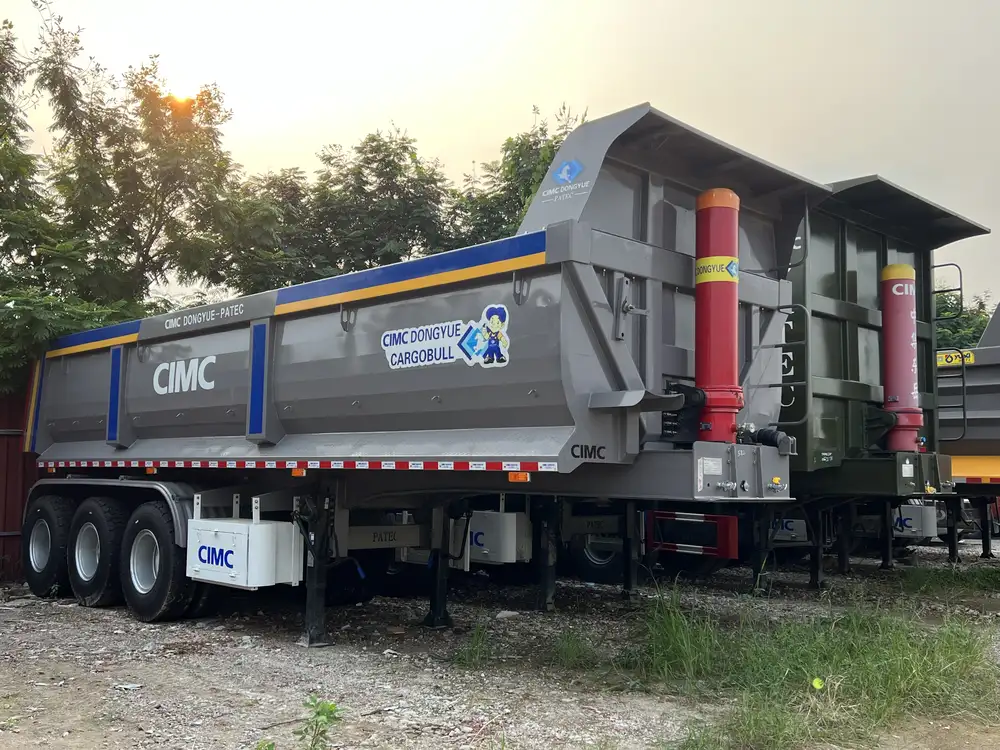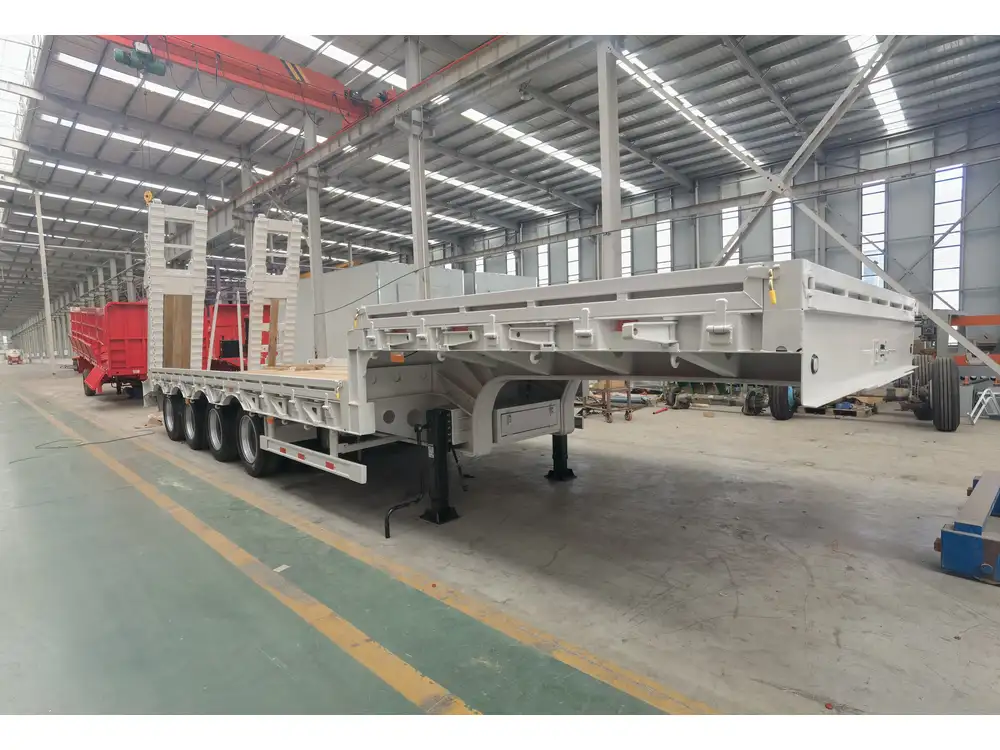In the dynamic and multifaceted world of semi-trailer manufacturing, understanding the integral components of various trailer types is critical. One such essential feature, particularly for dump trailers, is the dolly leg. This article explores the intricacies of dolly legs, their functionality, design variations, maintenance responsibilities, and more, ensuring that you have an exhaustive understanding of this vital component.
What Are Dolly Legs?
Dolly legs, often referred to as stabilizing legs, are retractable support structures located at the front of a dump trailer. Their primary purpose is to provide stability and support when the trailer is not hitched to a hauling vehicle. Typically constructed from robust steel, dolly legs are designed to endure heavy loads while maintaining the integrity of the trailer and its contents.
Key Components of Dolly Legs
| Component | Description |
|---|---|
| Support Frame | The main structure that houses the dolly legs, providing durability. |
| Adjustable Feet | Extensible ends allowing for height adjustments to support various terrains. |
| Hand Crank | A manual mechanism used to extend or retract the legs, though some modern systems are hydraulic. |
| Safety Pins | Added features to ensure that the legs stay locked in place once extended. |

The Functionality of Dolly Legs in Dump Trailers
Understanding the functionality of dolly legs requires a look into the operational context of dump trailers:
Stability During Unloading
When a dump trailer unloads its cargo, the weight distribution can shift dramatically. Dolly legs act as stabilizers during this process. They secure the front of the trailer, preventing any unintended movement that could result in tipping or spilling contents.
Supporting Heavy Loads
Dolly legs are engineered to support substantial weight. Dump trailers can carry numerous tons of material; thus, having reliable support ensures that the trailer remains upright and operational when detached from a hauling vehicle.

Enhancing Safety Features
By providing additional support, dolly legs contribute to the overall safety of dump trailer operations. They mitigate risks associated with unintentional trailer movements and help maintain a level surface while loading and unloading materials.
Types of Dolly Legs
While all dolly legs serve the primary function of support and stability, they come in various types suited to different applications:
Manual Dolly Legs
These legs are adjusted using a hand crank, allowing operators to set the desired height before use. Manual dolly legs offer excellent reliability but require physical effort to operate.

Hydraulic Dolly Legs
Hydraulic versions have become increasingly popular due to their ease of use and efficiency. Operators can adjust the height with the push of a button, significantly reducing the time it takes to prepare the trailer for unloading.
Adjustable Dolly Legs
This design allows for versatile height settings, accommodating various terrains and load types. They provide an enhanced level of customization, enabling operators to adjust based on specific needs.
Maintenance of Dolly Legs: Best Practices
Proper maintenance is paramount to ensure the longevity and functionality of dolly legs. Regular checks and upkeep prevent costly repairs and enhance operational efficiency.

Routine Inspection
Conducting periodic inspections is crucial. Look for signs of rust, mechanical wear, or bending, as these can compromise the integrity of the dolly legs.
Lubrication
Regularly lubricating moving parts, especially for manual legs, ensures smoother operation and reduces wear over time.
Cleaning
Dirt and debris can accumulate around the dolly legs, affecting their performance. Keep all components clean to maintain functionality.

Replacement of Worn Components
When dolly legs show signs of excessive wear, replace parts promptly. This could include legs themselves, rubber feet, or safety pins.
Common Problems Associated with Dolly Legs
Understanding common issues can help in routing solutions efficiently:
Difficulty in Extension or Retraction
This can be a result of dirt accumulation or a lack of lubrication. Regular maintenance helps mitigate this problem.

Structural Failure
Overloading can lead to bent or broken dolly legs. Always adhere to the manufacturer’s weight specifications.
Inadequate Stabilization
If dolly legs fail to provide sufficient support, consider whether they are adjusted correctly to suit the loading area. Sometimes environmental factors, such as slope, may require additional attention.
How to Choose the Right Dolly Legs for Your Dump Trailer
Choosing the right dolly legs is crucial to ensure optimal performance and safety. Consider the following factors:

Load Capacity
Evaluate the maximum weight your dump trailer will carry. Selecting dolly legs rated for higher capacities ensures that they can withstand demands.
Material Quality
Opt for high-grade steel or aluminum options that promise durability and resistance to corrosion. The longevity of dolly legs is largely dependent on the material quality.
Cost Efficiency
While there may be lower-cost options available, investing in high-quality dolly legs ultimately reduces the risk of failures and costly replacements in the long run.

Manufacturer Reputation
Always choose dolly legs from reputable manufacturers. Reliability in terms of design and material quality is essential for maintaining the operational integrity of your dump trailer.
Innovating the Future of Dolly Legs
Recent advancements in trailer technology have heralded innovative changes in dolly leg design and functionality. Here’s a glimpse into future innovations:
Smart Dolly Legs
The integration of smart technology is making waves in trailer manufacturing. Smart dolly legs could feature sensors that provide real-time feedback on stability, load distribution, and potential mechanical failures.

Electrically Operated Legs
As with hydraulic systems, electrically operated dolly legs will offer even more efficiency, reducing the reliance on manual or hydraulic systems, thus enhancing ease of use.
Conclusion
Understanding dolly legs on dump trailers encompasses a deeper comprehension of their design, functionality, and care. With robust support structures critical for the safe and efficient operation of trailers, investing in high-quality dolly legs is indispensable.
Key Takeaways:
- Support & Stability: Understanding the critical role of dolly legs in supporting the trailer during loading and unloading.
- Regular Maintenance: A commitment to routine inspections and maintenance prevents long-term wear and enhances operational reliability.
- Selection Matters: Choosing the right type of dolly leg based on load capacity, material quality, and innovative design ensures efficiency and safety.
In a world where transportation demands continue to grow, staying informed about components like dolly legs helps ensure that your operations run smoothly and safely. Always strive for excellence in your manufacturing practices to maintain a competitive edge in the semi-trailer industry.



